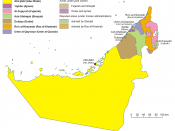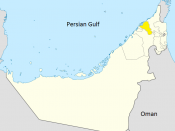INTRODUCTION: Germany (German: Deutschland), officially the Federal Republic of Germany (German: Bundesrepublik Deutschland (help*info)), is a country located in Central Europe. It is bordered to the north by the North Sea, Denmark, and the Baltic Sea, to the east by Poland and the Czech Republic, to the south by Austria and Switzerland, and to the west by France, Luxembourg, Belgium and the Netherlands.
WORK FORCE COMPOSITION:
The distribution of Germany's workforce by sector is very similar to the relative output of each sector. The workforce was distributed as follows: agriculture, 2.2 percent; industry, 26.4 percent; and services, 71.3 percent. Participants in the workforce totaled 38.87 million. Germany's seasonally adjusted unemployment rate increased to 12 percent, or nearly 5.2 million people. Both statistics represented post-war records. Unemployment approached 20 percent in some states in the East, where high wages are not matched by productivity.
SOCIAL ISSUES:
Reunification:
Issues created by the German Reunification of 1990 have begun to narrow.
While the standard of living is still higher in the western half of the country, easterners now share a reasonably high standard of living.. While the economic issues are abating (even though the unemployment rate still is considerably higher in the East), a division in society and culture continues. Stereotypes and labels such as "Jammerossi" (whining easterner), "Besserwessi" (arrogant westerner who always thinks he's right) and western resentment towards the costs of unification point to continued prejudices.
Neo-Nazi / far-right related violence:
Germany has continued to struggle with "far-right violence" or "neo-nazis" which are presently on the rise. There is some debate as to whether "hate crime" is presently on the rise or more arrests have been made due to increased law-enforcement efforts.
A low birth rate and an aging population:
Germany has one of the lowest birthrates in Europe and it...


